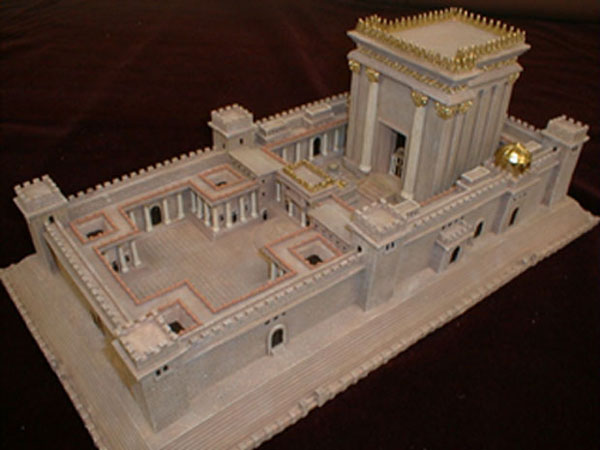The Coming Race
Viril Society - (1871) Taken from a novel by Bulwer Lytton, about a subterranean beehive - like, socialist utopia ruled by superior beings who had mastered the so called Viril, or Life Force. They performed healing and telepathy. This coming race combined the political ideals of the Order of the Illuminati with Hindu Misticism, Theosophy and the Cabala. Their symbol was a swastika(fylfot). It is a Masonic emblem that links Eastern and Western occultism. Freemasons also use a beehive as one of their important symbols.King Solomon's Temple
(Complete with trap door beneath the floor)

From Mason Encyclopedia:
Bacon, Francis - Baron of Verulam, commonly called Lord Bacon. Nicolai thinks that a great impulse was excercised upon the early history of Fremasonry, by the New Atlantis of Lord Bacon. In this learned romance Bacon supposes that a vessel lands on an unknown island, called Bensalem, over which a certain King Solomon reigned in days of yore. This King had a large establishment, which was called the House of Solomon, or the college of six days namely the days of the creation. Bacon afterwards desribes the immense apparatus which was there employed in physical researches. There were, say he deep grottoes and towers for the sucessful observation of certain phenomena of nature; articfical mineral waters; large buildings, in which meteors, the wind, thunder, and rain were imitated; exstensive botanic gardens; entire fields, in which all kinds af animals were collected, for the study of their instincts and hsbits; houses filled with all the wonders of nature and art; a great number of learned men, each of whom, in his own country, had the direction of these things; they made journeys and observations; they wrote, they collected , they determined results, and deliberated together as to what was proper to be published and what concealed.
The romance became at once very popular, and everybody's attention was attracted by the allegory of the House of Solomon. But it also contributed to spread Bacon's views on experimental knowledge, and led afterwards to the institution of the Royal Society, to which Nicolai attributes a common object with that of Society of Freemasons, established, he says, about the same time, the difference being only that one is esoteric and the other exoteric in its instructions. But the more immediate effect of the romance of Bacon was the institutions of the Society of Astrologers, of which Elias Ashmole was a leading member. Of this society Nicolai, in his work on the Origin and History of Rosicrucianism and Freemasonry says:
"It's object was to build the House of Solomon, of the New Atlantis, in the literal sense, but the establishment was to remain as secret as the island of Bensalem - that is to say, they were to be engaged in the study of nature - but the instruction of its principles was to remain in the society in an esoteric form. These philosophers presented their idea in a strictly allegorical method. First, there were the ancient columns of Hermes, by which Iamblichus pretended that he had enlightened all the doubts of Porphyry. You then mounted several steps, to a chequered floor, divided into four regions, to denote the four superior sciences; after which came the types of the six days' work, which expressed the object of the society, and which were the same as those found on an engraved stone my possession.
The sense of all which was this: God created the world, and preserves it by fixed principles, full of wisdom; he who seeks to know these principles - that is to say, the interior of nature - approximates to God obtains from his grace the power of commanding nature."
This society, he adds, met at Mason's Basinghall Street, becuase many of its members were also members of the Masons' Company, into which they all afterward entered and assumed the name Free and Accepted Masons, and thus traces the origin of the order to the New Atlantis and the House of Solomon of Lord Bacon. It is only a theory, but it seems to throw some light on that long process of incubation which terminated at last, in 1717, in the production of the Grand Lodge of England. The connection of Ashmole with the Masons is a singular one, and has led to some controversy. The views of Nicolai, if not altogether correct, may suggest the possiblity of an explanation. Certain it is that the eminent astrologers of England, as we learn from Ashmole's diary, were on terms of intimacy with the Masons in the seventeenth century, and that many Fellows of the Royal Society were also prominent members of the early Grand Lodge of England which was established in 1717.

